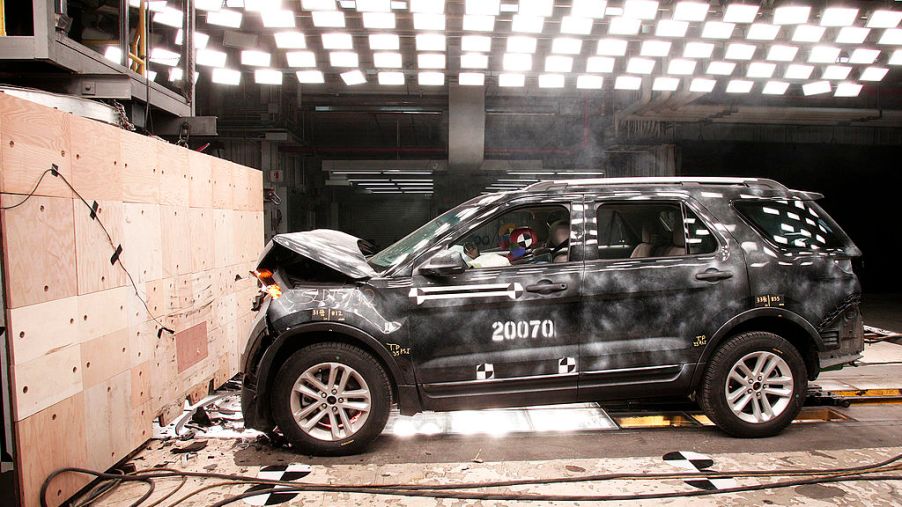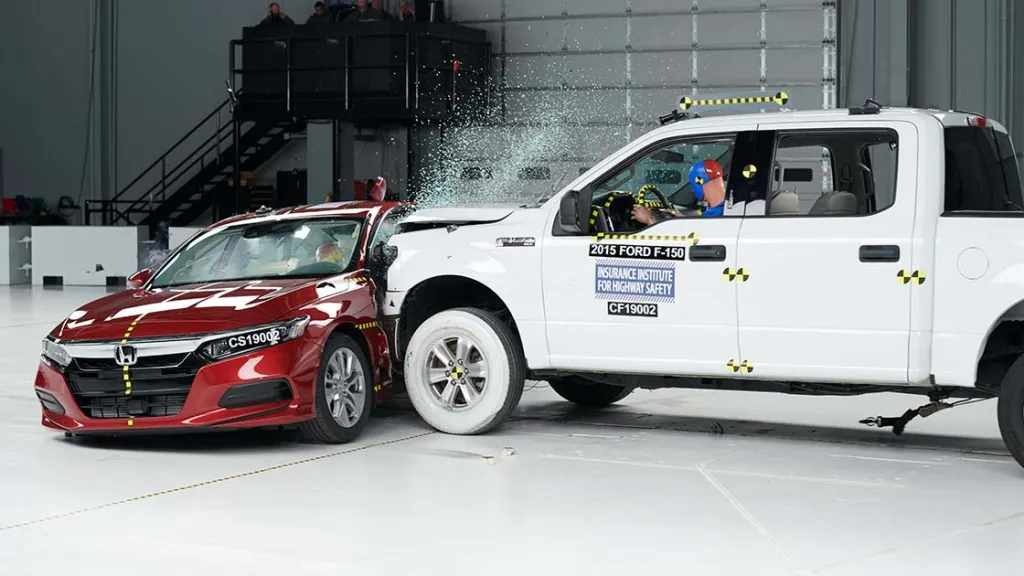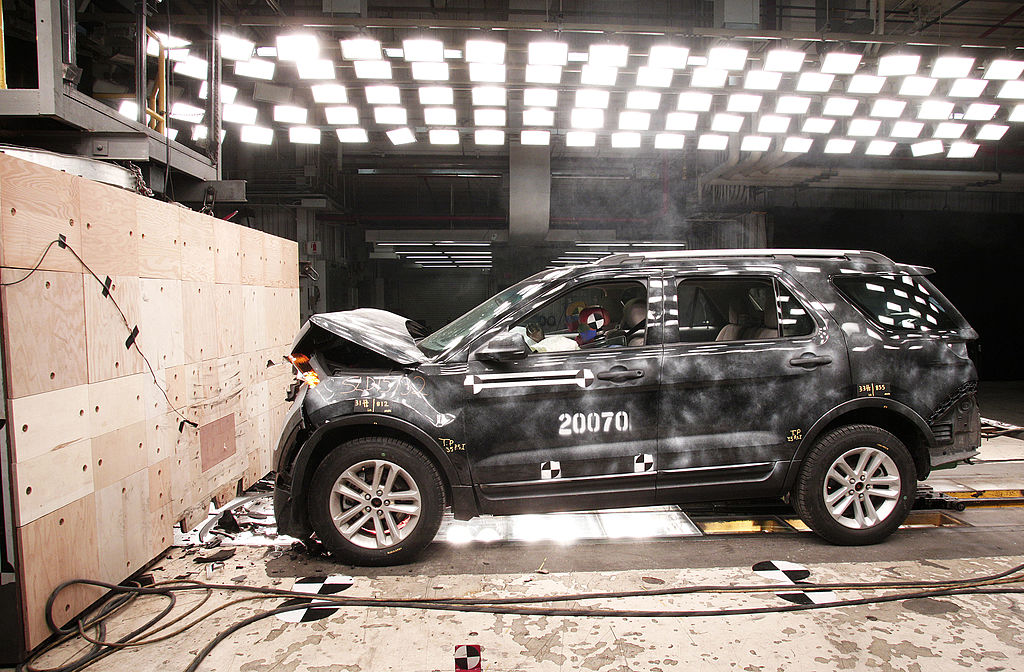
The NHTSA’s Crash Tests Are Outdated
With modern equipment like seatbelts and airbags, modern vehicles are much safer than they were in the past. Advanced driver-assistance features raise the safety envelope even more. However, as we’ve seen with the state of headlight technology, as well as the loopholes involving large trucks, not every bit of safety legislation has caught up with the times. And unfortunately, that’s also the case with the National Highway Traffic Safety Administration’s crash tests.
How the NHTSA’s crash tests evolved
Even in the 50s and early 60s, Donut Media explains, most cars were designed around styling or performance. Granted, the modern 3-point seatbelt wasn’t invented until 1959. However, lap belts did exist before that. But lap belts and padded dashboards were usually optional extras, not standard features.
Then, in 1965, Ralph Nader’s book Unsafe at Any Speed pointed out the flaws in safety engineering that American automakers were perpetuating. The book particularly pointed out the issues the Chevrolet Corvair had due to excessive penny-pinching. 2 years later, the US government formed the NHTSA and released the first set of federal vehicle safety standards. And in 1978, the NHTSA created the New Car Assessment Program, through which the first crash tests were instituted.
Some automakers had performed their own crash tests before this, YouCar reports. A few even used crash-test dummies. But the advances in technology meant 1970s dummies could be wired with electronic sensors for improved data recording. Initially, the NHTSA only performed frontal-impact crash tests, pulling cars at a speed of 35 mph. Then, in 1996, the organization introduced the side-impact test, followed in 2000 by rollover tests.
But, although the NHTSA has modified how it’s reported its results over the years, the tests themselves haven’t really changed. And that’s a problem.
The issue with the NHTSA’s crash tests

For one, the NHTSA doesn’t test for frontal-overlap. That’s why, Real Engineering explains in the video below, the Insurance Institute for Highway Safety was created—to supplement the NHTSA. The organization runs its own crash tests, some of which are run at higher speeds.
However, recently the IIHS revealed that it would have to scale up the severity of its crash tests. Because pickup trucks and SUVs are now a significant portion of the automotive landscape, the current impact barrier isn’t large enough, and the test car not moving fast enough, to simulate a real-world crash. That’s why, despite improved safety features, pickup trucks continue to endanger passenger cars more than SUVs. And that’s even ignoring heavy-duty trucks, which are exempt from certain crash standards. But that’s not the only problem.

Firstly, vehicles have improved so much over the past, that almost everyone gets a high NHTSA rating, Consumer Reports explains. And it prevents consumers from making a truly educated decision about which cars are safer. The NHTSA’s crash tests also don’t take into account modern ADAS tech, which is a major selling point. However, arguably the bigger issue is what the NHTSA doesn’t test.
CR reports that the European NCAP has 14 more tests that the US NCAP, including pedestrian safety tests. Car and Driver reports that, despite cars seemingly getting safer, pedestrian and cyclist deaths have actually increased recently. Plus, crash tests often neglect to include updated female dummies, if female dummies are included at all.
Will they be getting updated?
In 2015, Reuters reports, a proposal was put forward for the NHTSA to begin revamping its NCAP standards and 5-Star Rating system. These changes were supposed to be implemented for the 2019 model year but they stalled.
However, Roadshow reports the agency is restarting these efforts to modernize its crash tests. The NHTSA claims the proposed changes would be announced sometime in 2020, followed by a review period.
Follow more updates from MotorBiscuit on our Facebook page.


